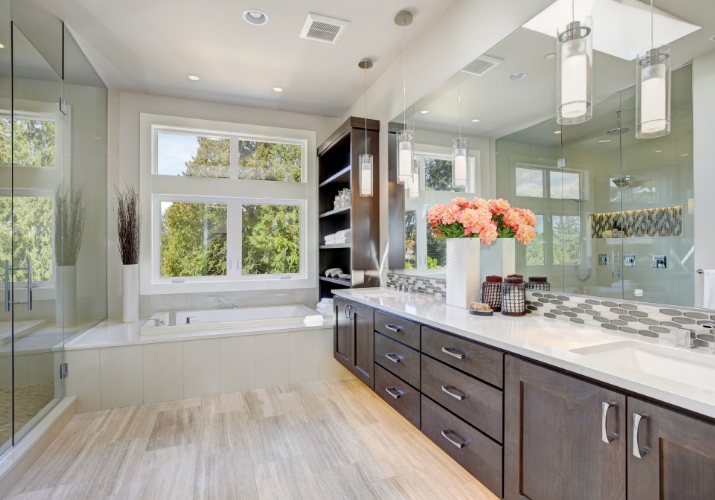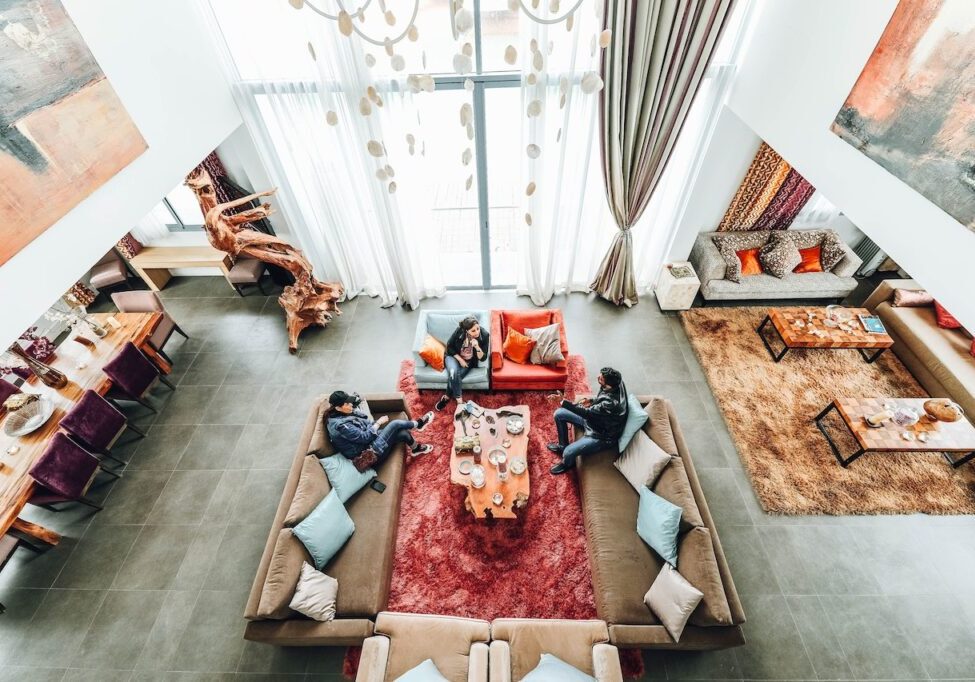Blinds Vs. Shades – The Complete Comparison Guide

Blinds vs. shades can both help add value to your home and give it a stylish makeover. When deciding, always consider factors such as budget, window location, and energy efficiency.
Are you trying to decide between blinds and shades for your window coverings? As you may have discovered, there are several things to consider. But don’t worry – we’re here to help!
Before we dive in, let’s ask ourselves a few questions.
- What kind of windows do you have, and where in your home are they?
- How much time do you have to maintain and keep them clean?
- What existing decor or furniture is in the room?
- Do you have young kids and pets?
- Is privacy a priority?
- Will you be selling your home in the near future?
- What is your budget?
Having the answers to these questions will make choosing the perfect window coverings that little bit easier.
With that said, no matter which option you choose, window coverings are an investment in your home and one that should offer you long-term value.
To help you weigh your options, we’ve compiled this handy comparison guide – blinds vs. shades. We’ll break down the pros and cons of each, starting with blinds, and explore the different types available.
So let’s find the perfect window covering option for your home!

Pros and Cons Of Blinds
Blinds are known for their versatility and come in several styles, such as horizontal, vertical, roller-style, and more. Plus, their classic slatted look is perfect if you want to maintain a traditional feel in your home.
However, there are some downsides to blinds. Here is a detailed pro-con list.
Pros:
- They are considerably more durable and can last longer than shades.
- Depending on the style, they may cost less than other window treatments.
- You can control privacy easily by tilting the slats up or down.
- With the same slat adjustments, you can also fully control the light coming into the room.
- Available in many colors, materials, and sizes.
- Suitable for any room in the house, from bathrooms to kitchens to bedrooms.
Cons:
- Depending on the style, they may provide less insulation from outside temperatures than shades can.
- Due to their construction, some blinds (mainly Venetian and roller-style) are more challenging to clean than shades.
- Finally, they may not be as aesthetically pleasing as certain styles of shades, though this is a personal preference.
Material Options For Blinds
When choosing the material for your blinds, there are several options.
- Aluminum: Often the most affordable and durable option. Also easy to clean with a damp cloth or duster. Available in many colors and finishes.
- Vinyl: Lightweight and highly affordable. Also available in a variety of colors. Easy to clean but can be prone to warping in high-temperature environments.
- Wood: More expensive than other materials but offers a classic look and better insulation. Easy to clean with the right cleaning products but needs more regular maintenance than other materials.
Pros and Cons Of Shades
Shades are an excellent option for homeowners looking for an aesthetically pleasing window treatment or to improve energy efficiency in their homes. They come in several materials, including fabric, wood, bamboo, and more.
However, you should be aware of some downsides to using shades in your home.
Pros:
- Better insulation from outside temperatures, hot or cold.
- Shades may offer more privacy from the outside world, depending on the style.
- It can add a soft and elegant touch to the room.
- Available in a variety of colors and styles.
- Easy to clean with the right cleaning products.
- For those looking for an eco-friendly option, there are several natural materials, such as wood or bamboo.
Cons:
- Poor light control as the shade will be one solid piece of material.
- More expensive than other window treatments like blinds or curtains.
- Not suitable for rooms with moisture, such as bathrooms or kitchens.
- Due to their construction, they are more prone to damage from pets and young children.

Material Options For Shades
When choosing between different materials for shades, consider the look you’re going for and how much insulation and privacy you need.
- Fabric: Available in a variety of colors and textures. Excellent insulation and privacy from the outside world, but may be more costly than other materials.
- Wood or Bamboo: Natural materials are perfect for those looking for an eco-friendly option. With the right style of shade, it can also provide fantastic insulation.
- Cellular or Pleated: Made with multiple layers of fabric that fold into small cells when opened, providing improved insulation and light control.
Making The Right Choice For Your Home
Now that you know the pros and cons of blinds vs. shades, it’s time to choose which style you want to use in your home. When deciding, keep your answers to the questions from the intro at the top of your mind.
For example, due to their construction, blinds may be the better option if you have kids or pets at home. Alternatively, if you want to reduce the cost of heating or cooling your home, shades may be the better option, as they provide good insulation for your windows.
It’s also important to consider your budget when making your decision. Blinds are usually more affordable than shades, but you can find fantastic deals on both window treatment options when you start shopping.
No matter which option – blinds vs. shades – you choose, they can add value to your home and give it a stylish makeover. Just remember to consider all the factors before making a decision.
Now that you’ve picked between blinds vs. shades for your home let’s talk about the different types of each you can shop for.
7 Different Types Of Window Shades

Cellular Shades
Cellular shades offer the best energy efficiency thanks to their honeycomb construction which traps air between the layers of fabric and provides excellent insulation. They come in various colors and materials, from light-filtering to blackout.

Roller Shades
Another classic option for your windows, roller shades are great for those looking for a simple yet elegant look. They also provide excellent light control and come in many colors and materials. Plus, they can be motorized with the help of a remote control if you want to keep your windows open with ease.

Roman Shades
Similar to roller shades in that they are raised and lowered with the pull of a cord, this window shade style has a more traditional look with its soft pleats when lowered. They also come in different materials, such as fabric or bamboo.
Woven Wood Shades
As the name suggests, this window shade style comprises woven wood materials like bamboo or rattan. They provide excellent insulation and are perfect for homes looking for a more natural look.
Solar Shades
Solar shades, or sunscreens, are perfect for those who want to reduce the light coming in without sacrificing their view. If protecting your furniture is essential, these will be the best option. They come in several colors and materials and offer excellent protection from UV rays.
Sheer Shades
Sheer shades provide a unique look as they have two layers, one that is sheer and one that is light-filtering or blackout. This option allows you to control how much light comes in while still being able to see outside.
Blackout Shades
Blackout shades block almost all incoming natural light, perfect for bedrooms and media rooms, providing maximum privacy and darkness. They are available in several materials and colors so that you can find the perfect one for your space.
6 Types Of Window Blinds

Vertical Blinds
Vertical blinds are vertical slats connecting at the top of your window or door frame. This style is typically the best solution for homeowners looking to cover their homes’ large windows and patio doors. Since you can adjust the tile of the slats, you have much more light control than you would if you covered these windows with shades. Finally, you can get them in several colors and materials, such as vinyl, wood, faux wood, and more.

Horizontal Blinds
Horizontal blinds are usually the same construction as vertical blinds, with one noticeable difference; the slats are horizontal instead of vertical.
They can be tilted open or closed, which offers excellent light control and privacy. Plus, they come in several materials, such as wood, faux wood, aluminum, etc. These are ideal for the other windows in your home, such as living room windows, kitchen windows, etc.
Aluminum Blinds
Aluminum blinds are a classic option for those looking for an affordable window treatment. They provide excellent light control and come in various colors and sizes. They are also moisture-resistant, making them ideal for bathrooms and kitchens. However, they do tend to be more prone to damage due to their construction.
Faux Wood Blinds
Mimicking the appearance of natural wood, faux wood blinds are resistant to moisture and are a cost-effective alternative. They come in various colors and textures and can be custom-made to fit your windows.
Real Wood Blinds
If you’ve got room in your budget, consider using real wood blinds. These bring a sense of luxury to your home, which can dramatically affect the value of your home. And, as you’d expect, they are available in various finishes and sizes.
Pleated Blinds
Pleated blinds have a unique look as they feature two pleats that provide excellent light control when raised or lowered. They are usually made of fabric and come in several colors and patterns. Plus, they can be motorized with the help of a remote control for ease of use.
When deciding, always consider factors such as budget, window location, and energy efficiency. Blinds vs. shades can both help add value to your home and give it a stylish makeover.
Whether you opt for the soft elegance of shades or the precise control of blinds, the right choice will elevate the beauty and functionality of your home.
Take your time to explore the vast array of options available, and remember that the perfect window treatment can transform your living spaces into a cozy and welcoming haven and increase the overall value of your home.
Check out these tips about how to insulate your home in the winter.



